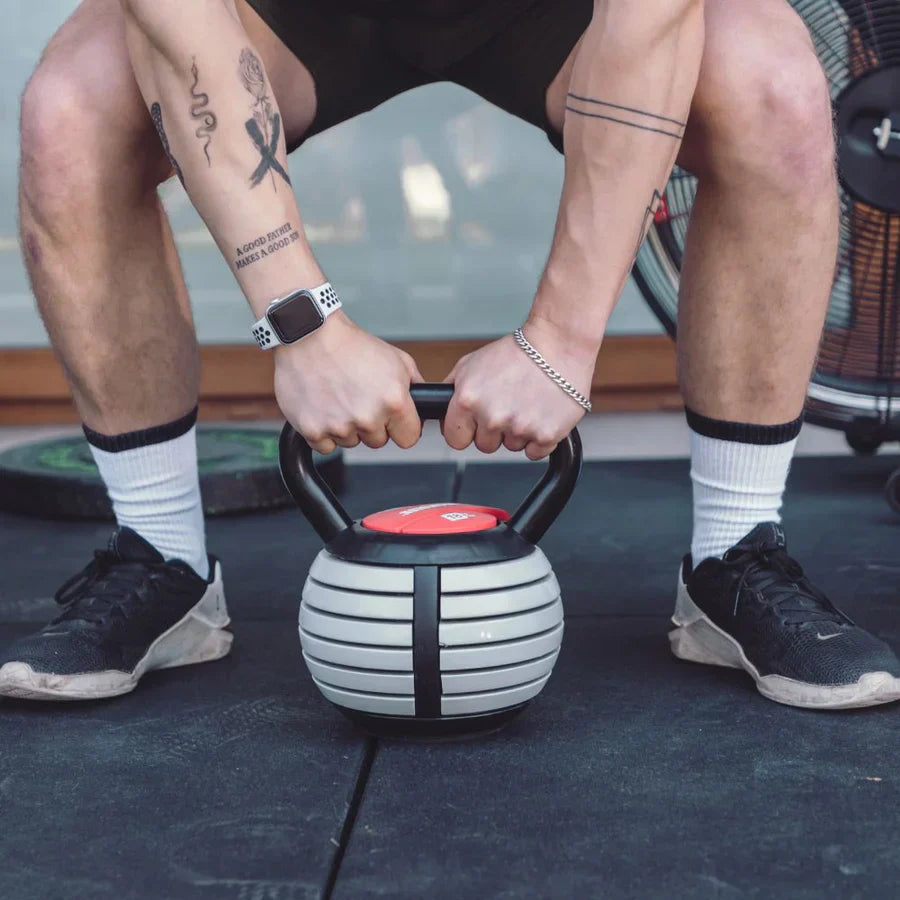Kettlebell vs Dumbbell: Which One Is Best for Cross-Training?

Keywords: kettlebell vs dumbbell, cross-training equipment, functional fitness, strength training, kettlebell workouts, dumbbell exercises
Introduction: Two Icons of Functional Fitness
When it comes to strength training and cross-training, two pieces of equipment dominate gym floors around the world: kettlebells and dumbbells. Both are powerful tools for building strength, improving conditioning, and developing athletic performance — but they offer different benefits, movement patterns, and training styles.
So which one should you choose for your workouts? The answer depends on your goals, experience level, and the type of training you’re after. Let’s break it down.
What’s the Difference Between a Kettlebell and a Dumbbell?
At first glance, the difference is obvious: a dumbbell is a balanced weight with equal load on both sides of a handle, while a kettlebell is an off-centre weight shaped like a cannonball with a handle on top.
This difference in shape drastically changes how each tool behaves during movement — and how your body adapts to training with it.
Dumbbells: Controlled, Balanced, and Versatile
Dumbbells are the go-to tool for traditional strength training. Because the weight is evenly distributed, they provide controlled resistance and allow for precise, symmetrical movements. They’re ideal for exercises that target specific muscles or require balance and stability, like:
- Bench press and overhead press
- Bicep curls and tricep extensions
- Lunges, squats, and step-ups
This makes them perfect for hypertrophy (muscle growth), isolation work, and structured strength programs.
Kettlebells: Dynamic, Explosive, and Functional
Kettlebells, on the other hand, are designed for dynamic, full-body movements. Their offset centre of gravity engages stabilising muscles and challenges coordination. They’re a staple in functional training, athletic conditioning, and high-intensity workouts. Classic kettlebell exercises include:
- Kettlebell swings and snatches
- Turkish get-ups and windmills
- Clean and press variations
These explosive, compound movements improve power, grip strength, cardiovascular endurance, and mobility — often at the same time.
Kettlebell vs Dumbbell: Which One Wins for Cross-Training?
Cross-training is all about versatility — developing strength, endurance, coordination, and functional movement patterns. Both tools shine here, but for different reasons:
1. Functional Strength and Movement Quality
Kettlebells take the lead when it comes to developing real-world strength, joint stability, and athletic coordination. Their dynamic movements mimic natural human movement patterns, which makes them ideal for improving overall athleticism.
2. Muscle Isolation and Progressive Overload
If your goal is muscle growth or precise strength development, dumbbells are unbeatable. They allow for progressive overload in small increments and are excellent for isolating specific muscle groups with control.
3. Conditioning and Endurance
Kettlebells offer a unique combination of strength and cardio. High-rep swings or complexes elevate heart rate while building strength — making them perfect for metabolic conditioning (metcon) workouts.
4. Accessibility and Learning Curve
Dumbbells are more beginner-friendly. Their straightforward design and stable weight distribution make them easier to use safely. Kettlebells require more technique, especially for ballistic movements like snatches and cleans.
How to Choose the Right Tool for You
Ultimately, the “best” choice depends on your training priorities:
- Choose dumbbells if your focus is on muscle growth, controlled strength training, or isolation work.
- Choose kettlebells if you want to improve power, conditioning, mobility, and athletic performance.
- Use both for the ultimate cross-training program — combining the precision of dumbbells with the dynamic benefits of kettlebells.
Conclusion: The Best of Both Worlds
There’s no clear winner in the kettlebell vs dumbbell debate — because the real power lies in using both strategically. Dumbbells give you control, progression, and isolation, while kettlebells deliver dynamic strength, power, and functional capacity.
Incorporating both into your training ensures a complete approach to fitness, unlocking better performance, more balanced strength, and improved movement in and out of the gym.
Ready to upgrade your training gear? Check out Ironside’s full range of kettlebells and dumbbells — built for athletes who take their cross-training seriously.

